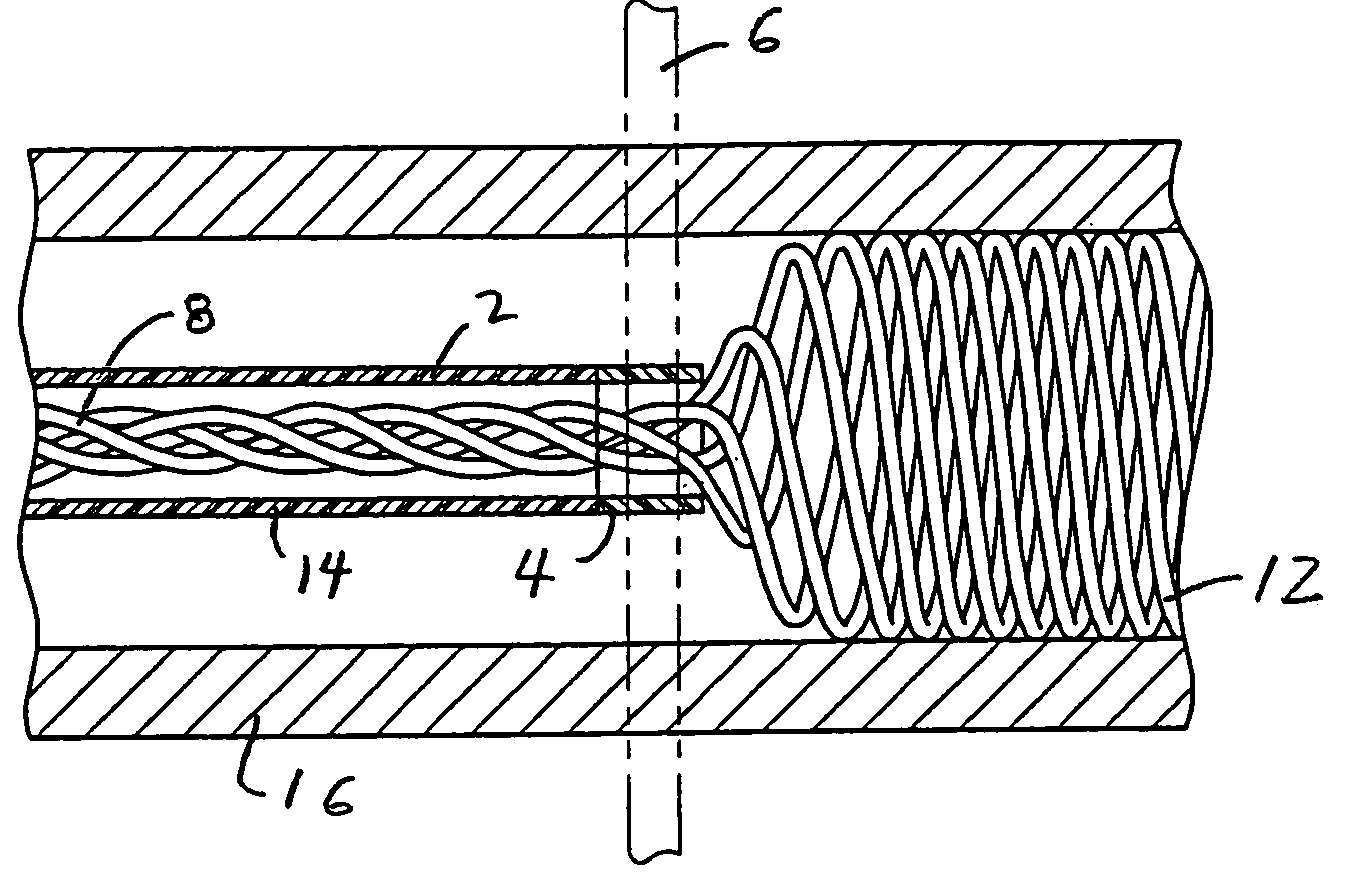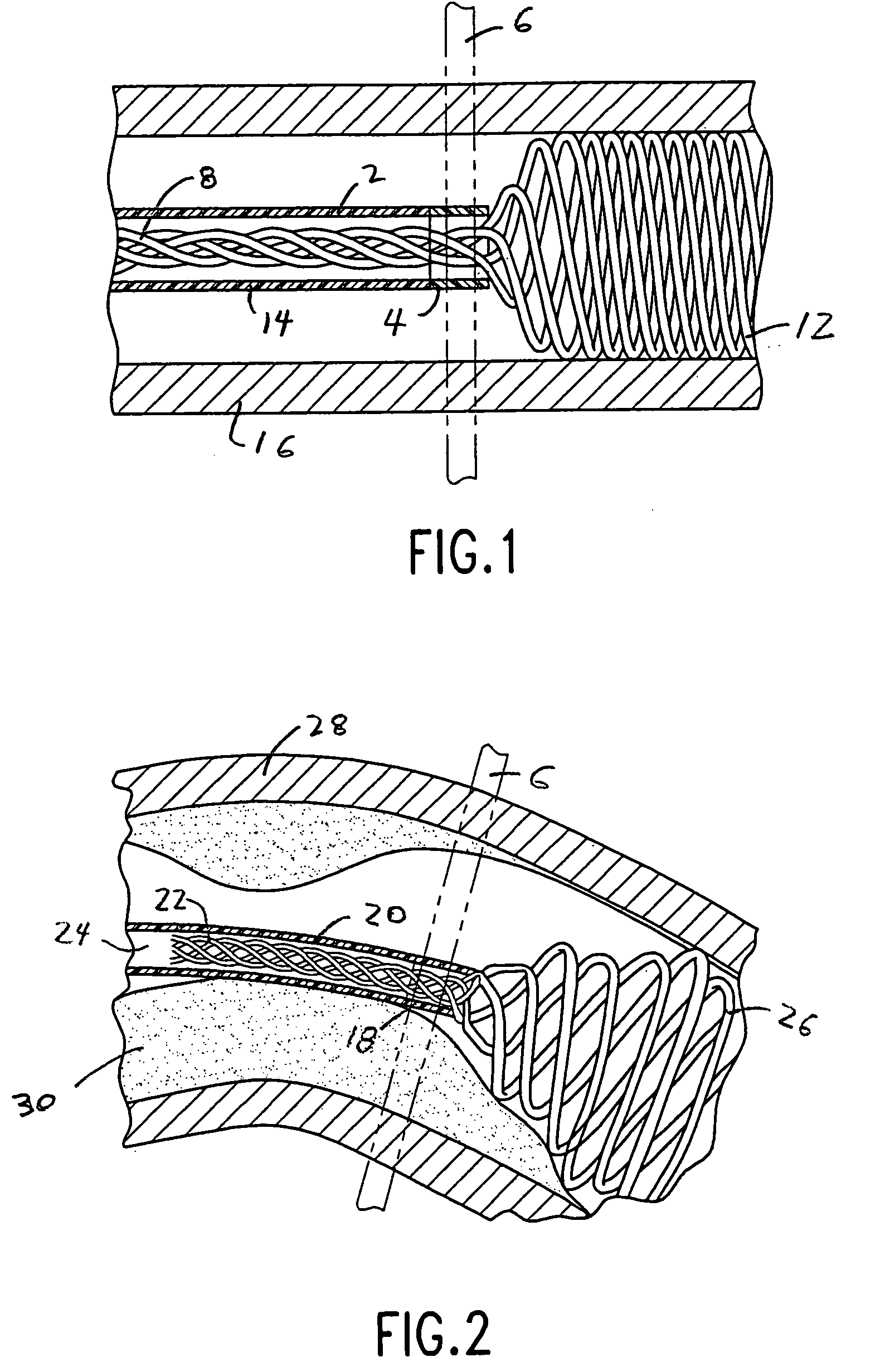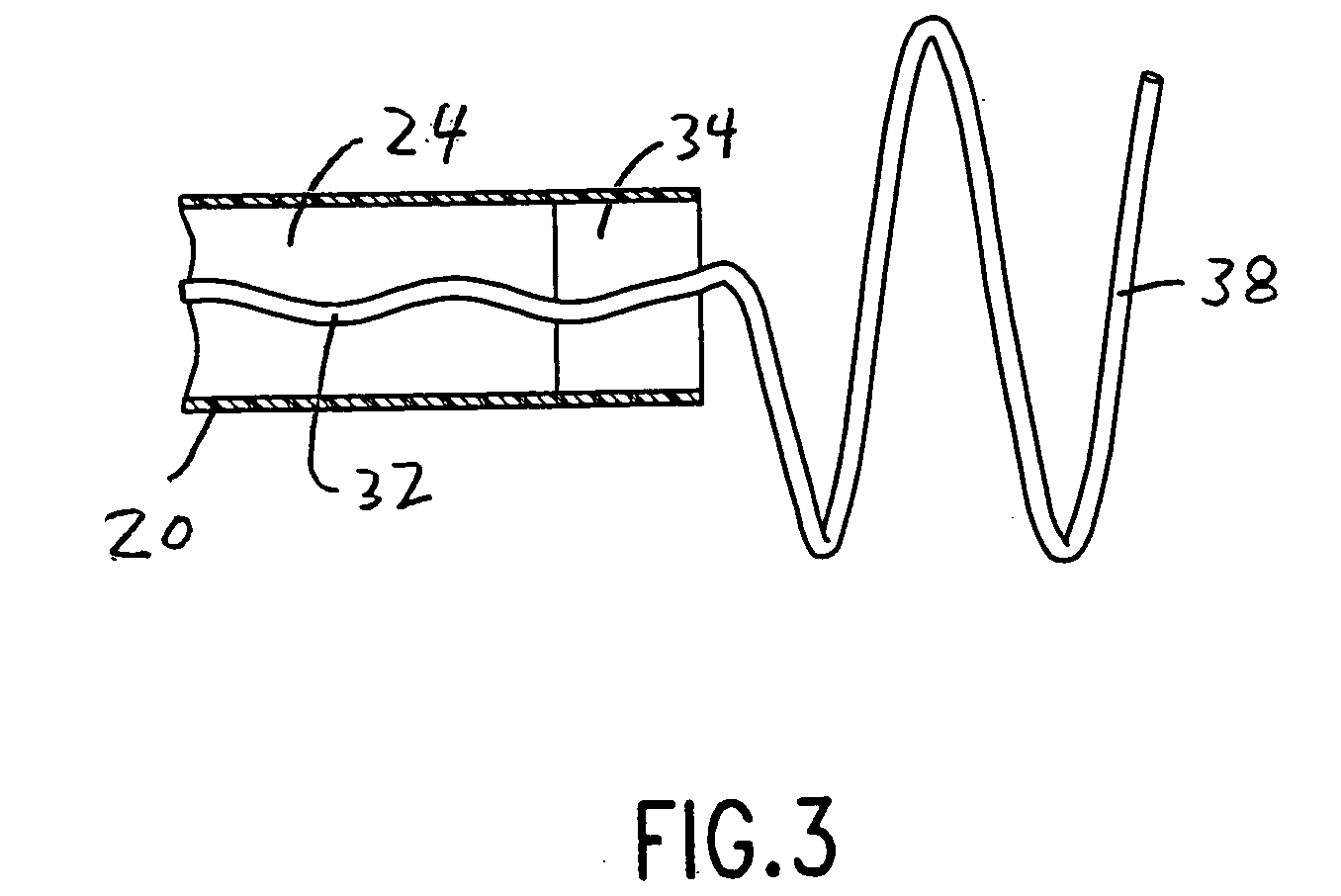Thermal transition methods and devices
a transition method and material technology, applied in the direction of prosthesis, machines/engines, blood vessels, etc., can solve the problems of size and geometry, the precision with which stents may be placed and expanded, and the cost of balloon expansion capacity
- Summary
- Abstract
- Description
- Claims
- Application Information
AI Technical Summary
Benefits of technology
Problems solved by technology
Method used
Image
Examples
Embodiment Construction
[0029] In the preferred embodiment, differing temperature environments are created and thermally isolated. The shape memory device undergoing transition is spatially translocated between a first temperature zone 2 and a second temperature zone 4. FIG. 1. Transition of the geometry of the shape memory material device 8 occurs in a spatially defined zone 6. The transitioned shape memory device 12 exits the thermal activation device 14 after transition. Once the device has undergone transition its temperature remains at or above (or below) the limits of transition so that there is no uncontrolled return to alternate temperature form. The transition occurs with the thermal activation device in situ so that the transitioned thermally active device is in position for use. As shown, the transitioned thermal activation device is present in a lumen 16. Other in situ applications for the process exist.
[0030] The method utilizes a defined space having a temperature maintained at or below eith...
PUM
| Property | Measurement | Unit |
|---|---|---|
| Temperature | aaaaa | aaaaa |
| Electrical resistance | aaaaa | aaaaa |
| Mechanical force | aaaaa | aaaaa |
Abstract
Description
Claims
Application Information
 Login to View More
Login to View More - R&D
- Intellectual Property
- Life Sciences
- Materials
- Tech Scout
- Unparalleled Data Quality
- Higher Quality Content
- 60% Fewer Hallucinations
Browse by: Latest US Patents, China's latest patents, Technical Efficacy Thesaurus, Application Domain, Technology Topic, Popular Technical Reports.
© 2025 PatSnap. All rights reserved.Legal|Privacy policy|Modern Slavery Act Transparency Statement|Sitemap|About US| Contact US: help@patsnap.com



